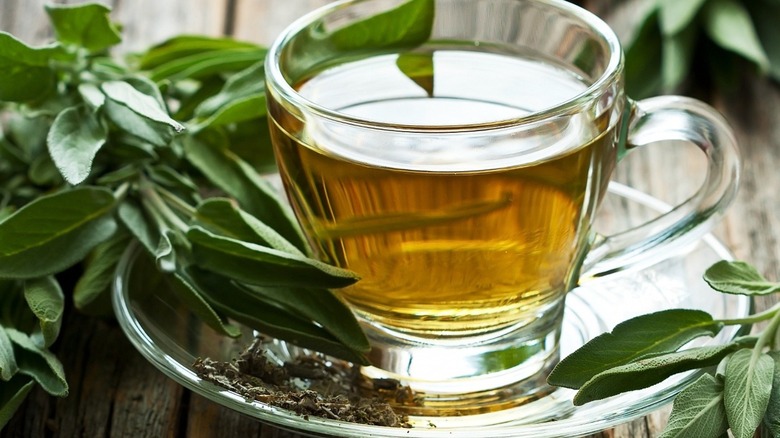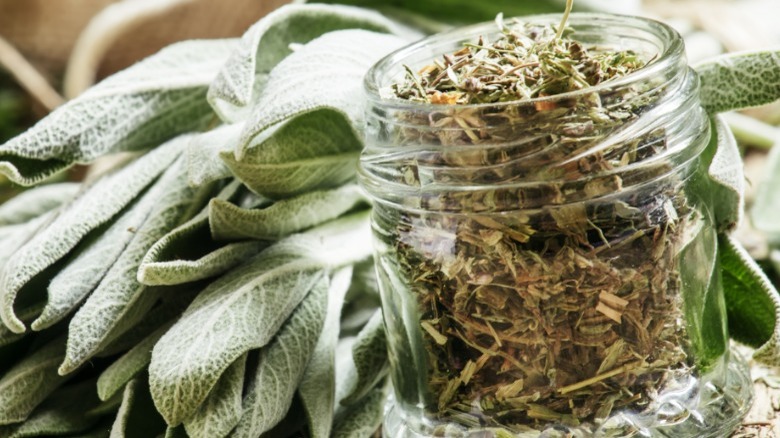Fresh Vs Dried Sage: What's The Difference?
Just because the time to prepare holiday stuffing has come and gone doesn't mean you have to leave those flavors in the past. Sage (Salvia officinalis), an herb that often makes an appearance around the festive fall and winter months, can play a role in your recipes any time of year.
This perennial herb grows natively in the Mediterranean and has fuzzy light green leaves, per Masterclass. In the Middle Ages, sage was used widely for its medicinal purposes to treat anything from sore throats to typhoid fever. According to Healthline, sage is high in nutrients. It contains vitamin K, many types of antioxidants, and is also antimicrobial, which can help support the well-being of your mouth and teeth.
Sage has a bold, earthy, herbal flavor that will overpower other ingredients if you're not careful. In the grocery store, you'll have the option of fresh sage or the dried kind that comes in a spice jar. The biggest sage mistake you're making when cooking with this herb is likely not adjusting properly when substituting dried sage for the fresh variety, because there are key differences between the two.
Dried sage is more potent than fresh
If you're opting to purchase dried sage, there are a few things to consider first, like whether you need ground sage or dry-rubbed sage. According to McCormick Science Institute, ground sage comes from processing the leaf into a fine powder. Rubbed sage is made when the entire leaf gets dried out and then rubbed together, creating a flakey mix. This variety is less potent than ground sage. You can use about a teaspoon of dried sage for every two teaspoons of rubbed sage.
The Rocky Mountain Spice Company reports that ground sage is best used for adding a "woody" flavor to your cooking. But if you want that distinct sage taste, you'll need to use dry-rubbed. People typically use dry-rubbed sage for items like Thanksgiving stuffing and sausage.
Fresh sage is a whole different animal. You should look for leaves in the grocery store or in your garden that aren't dry, brown, or spotted, per How To Culinary Herb Garden. Fresh sage is a bit milder than dried sage, Spiceography explained. For best results, add fresh sage into your recipe at the end. However, if you're using dried sage, you should incorporate the spice at the beginning of cooking to allow time to tame the strong flavors. With this sage advice, you'll always know the right type of sage to use.

